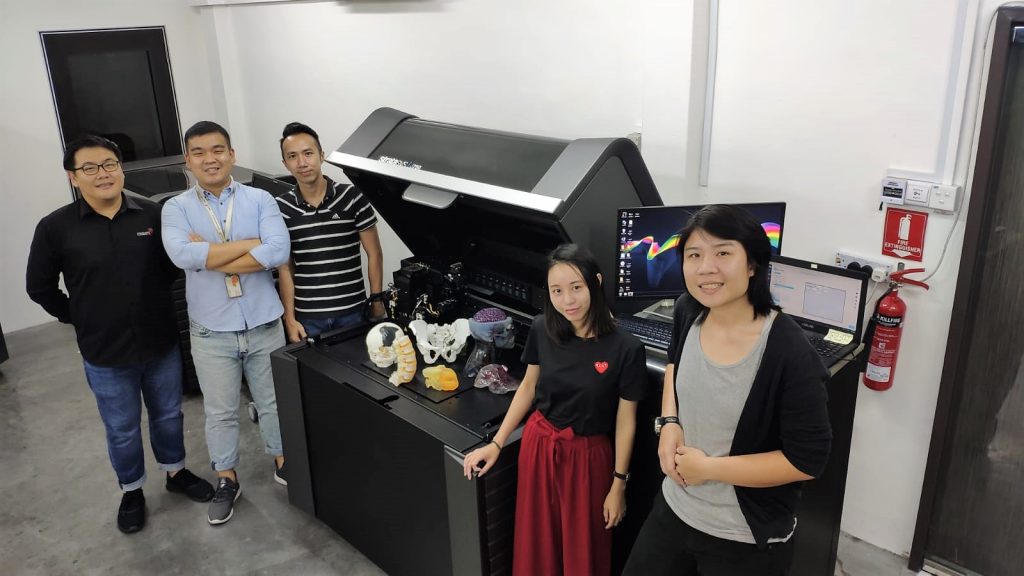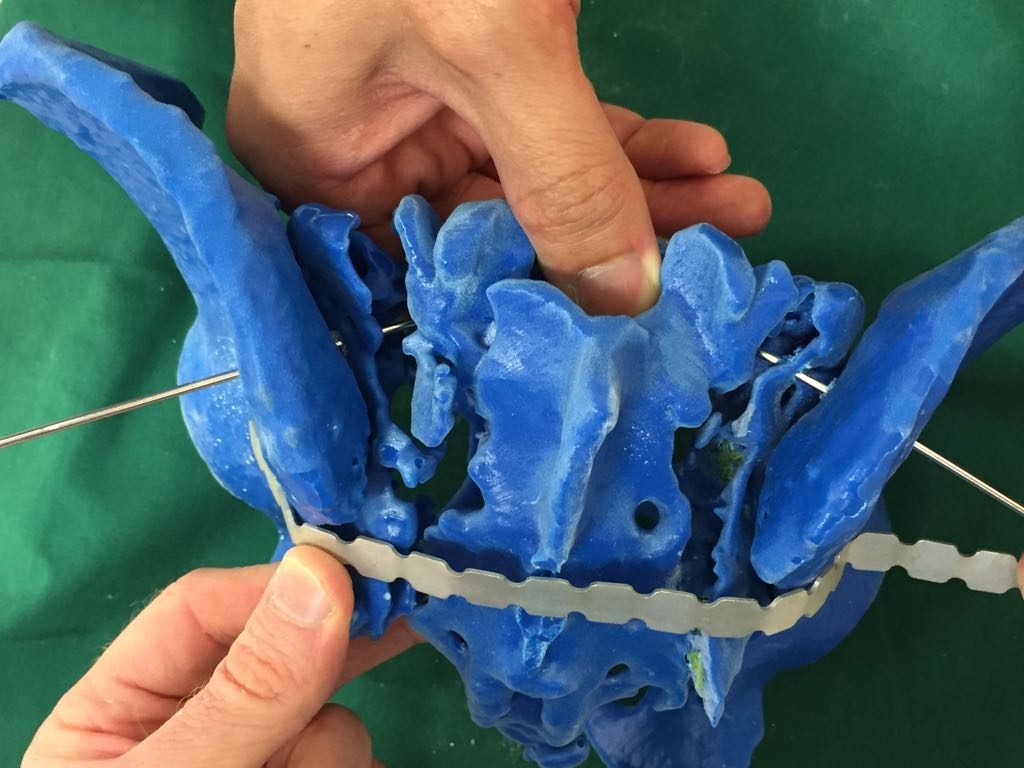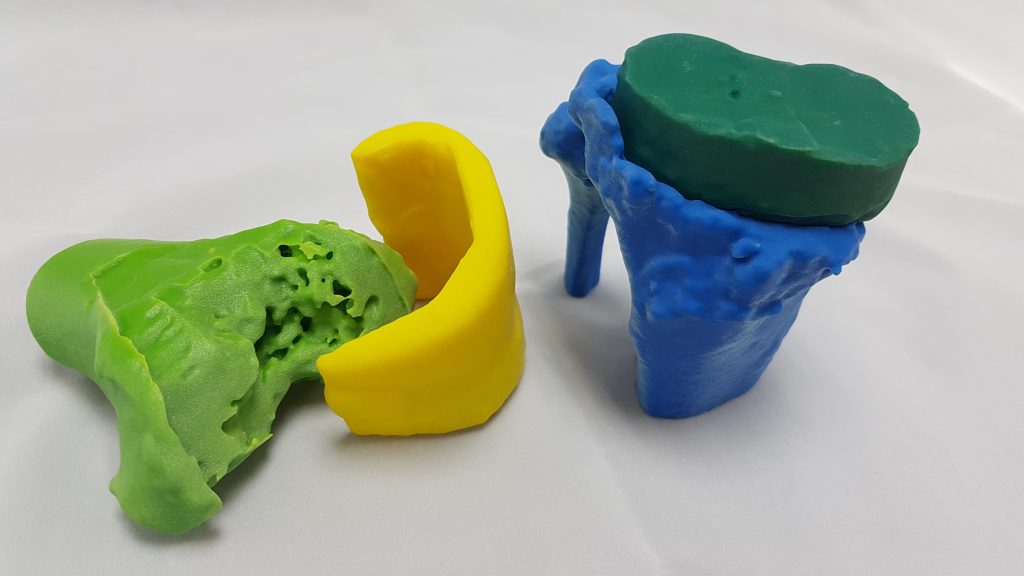We’ve written about the enterprising Singapore based Creatz3D before. They made a robot arm, we interviewed them on their expansion in the region and we’ve mentioned their work in News Briefs before. We’re interested in them because they are a reseller of ceramics, metals, bioprinting and plastic systems but also offer software and services. There is currently a huge shift underway in the 3D printing market where people are moving towards enterprise solutions and acting more like systems integrators than box movers. Creatz3D is a great example of a firm that is broadening its offering and moving into more high value applications. A great example of this is their service bureau for medical models. We interviewed Nigel Yap, Accounts Manager for the Creatz3D Medical Service Bureau to find out more.

What is Creatz3D Medical?
Creatz3D Medical Service Bureau pride ourselves as a solution provider in working together with our customers to provide the perfect medical solution for their needs. Being a service bureau that is focused entirely on medical applications, our seamless end-to-end solution guarantees a hassle-free experience in the conversion of CT/MRI images into 3D printed medical models.
What kinds of parts do you produce?
We recreate 3D printed medical models based on patients’ scan such as CT and/or MRI imaging.
Biological models are 3D printed medical models that are solely converted from patient scans (CT/MRI). These are used by surgeons in the interpretation of complex surgical conditions and helps in uncovering new surgical procedures (such as minimally invasive alternatives) that helps in the reduction of surgical time, recovery time and overall risk to the patient.
Educational models meanwhile are used for procedural skills training and simulation. As opposed to operating on human, animal cadavers or medical simulators, these models allow a pathological approach to the practice of rare and complex surgical procedure that would traditionally be taught through 2-dimensional illustrations.
What kinds of materials do you use?
Using the multi-material capabilities of our in-house PolyJet 3D Printer, we can work with a range of materials from rigid to clear and rubber-like properties. These materials have been tested with surgical practitioners and their feedback are that the materials react quite similarly as cortical and cancellous bone structures as well as the soft textural feeling of various human organs. The multi-material capabilities also help in separating anatomical features through color differentiation.

What printers?
We have 2 in-house machines that are used for various purposes, namely the Fortus 450mc as well as the Stratasys J750.
Who would you like to partner with?
We are always open to medical device companies who are looking at developing their own range of simulators, that can be used in their training or research and development purposes.
How do you take MRI scans and turn them into printable files?
Imagine the individual slices of the CT/ MRI scans as pages in a book. What our software does is that we take these individual pages and assemble them together back into a book, placing successive layers on top of each other in the creation of this book. After we have stacked the images in successive order, we clean the data to remove unwanted anatomies.
For instance, for the creation of a 3D printed heart model, with a CT scan of the chest cavity, we will remove the lungs and liver and just focus on the heart.
Thereafter, the file is cleaned up in a post-processing software that helps in ensuring that the file is printable and subsequently exported as an STL file that is then read by the 3D printer.
Do you do medical models today? What would they cost?
We currently provide the service of converting CT/MRI images into 3D medical models. The costing of each part varies depending on the anatomy in question. As such, it is difficult for us to provide any figure off hand. It would be best to have a consultation with the customer/ doctor in understanding their requirements before we are able to provide them with an ideal solution.

How can 3D prints help in surgical planning?
There are a number of ways that 3D Printing can help in surgical planning, these includes:
Better pre-operative planning through enhanced visuospatial appreciation of the defect in a relationship with other anatomical structures
Better pre-operative planning reduces overall surgical time, thus reducing time under general anesthesia, and improving the recovery rate
Pre-planned cuts and angles can be done in a customized surgical guide that will reduce surgical time
New minimally invasive procedures can be practiced prior to surgery to enable faster surgical time
Sizing of implants can be done on the 3D printed medical model instead of traditional methodology such as X-Ray templating on knee implant that has been proven to be inaccurate
How can they help educate doctors?
Medical education has traditionally been going through the concept of “see once, do once, teach once”. This form of education has proven to be effective but it is labour and time intensive. In addition, rare and complex conditions do not normally go through the above concept because of its rarity. This makes it a challenge to enable the right opportunity to be taught to junior doctors.
Many of these rare and complex conditions are thus traditionally taught through 2-dimensional representations. These are however unable to provide a 3D spatial appreciation of the anatomy and do not allow for simulated surgery.
Cadaveric training is also increasingly difficult to organize due to specimen shortages. Even if there is a steady supply, the specimens do not reflect the pathological features that would be required in the teaching of rare and complex conditions.
With 3D printed medical models, medical educators can show rare and complex conditions in a tangible form. They are also able to create customized simulation models where junior doctors can practice upon them in a controlled and risk-free environment. The repeatability nature of 3D printed medical models allows for multiple practice session, akin to being exposed to a real-life simulator for high-risk scenarios, before being allowed to operate.
What kinds of customers do you have?
There are mainly 3 types of customers that we work with for varying applications:
Surgical Practitioners (Doctors)
- Pre-surgical planning models
- Pre-surgical simulation models
Medical Educators
- Medical education models
- Procedural skills training simulation models
Medical Device Companies
Training models
Research and development models
Subscribe to Our Email Newsletter
Stay up-to-date on all the latest news from the 3D printing industry and receive information and offers from third party vendors.
You May Also Like
Printing Money Episode 18: The DC Fly-In with Mark Burnham, AddMfgCoalition
It’s only been a week since the previous show, but Printing Money is back already with Episode 18. Certain events call for Printing Money’s coverage, and the recent 2nd Annual...
3DPOD Episode 199: Collaborative Design with Graham Bredemeyer, CEO of CADchat
About a decade ago, entrepreneur Graham Bredemeyer started Collider, a company that combined the best of 3D printing with injection molding. Now he runs CADChat, which hopes to make sharing...
Printing Money Episode 17: Recent 3D Printing Deals, with Alex Kingsbury
Printing Money is back with Episode 17! Our host, NewCap Partners‘ Danny Piper, is joined by Alex Kingsbury for this episode, so you can prepare yourself for smart coverage laced...
3DPOD Episode 198: High Speed Sintering with Neil Hopkinson, VP of AM at Stratasys
Neil Hopkinson, a pioneering 3D printing researcher, played a pivotal role in developing a body of research that is widely utilized today. He also invented High Speed Sintering (HSS), also...

































